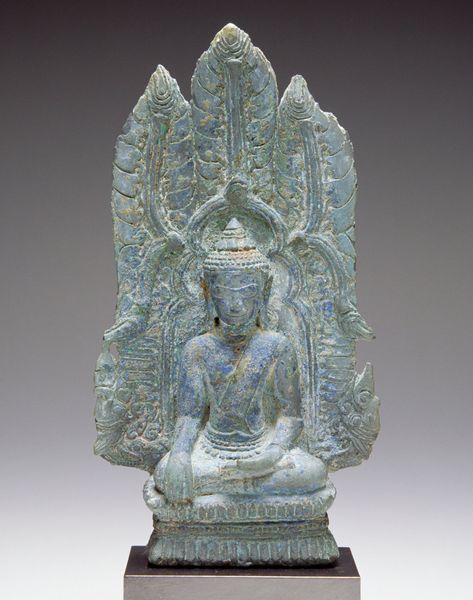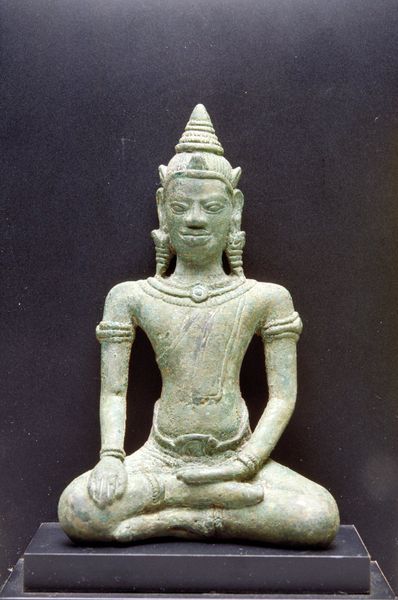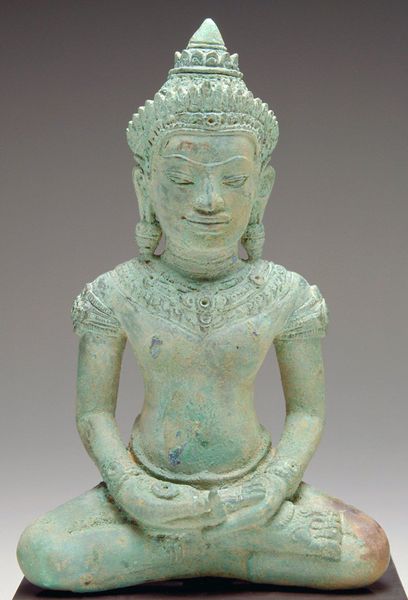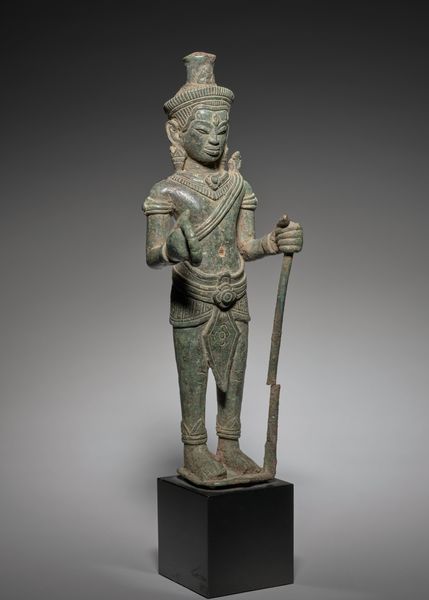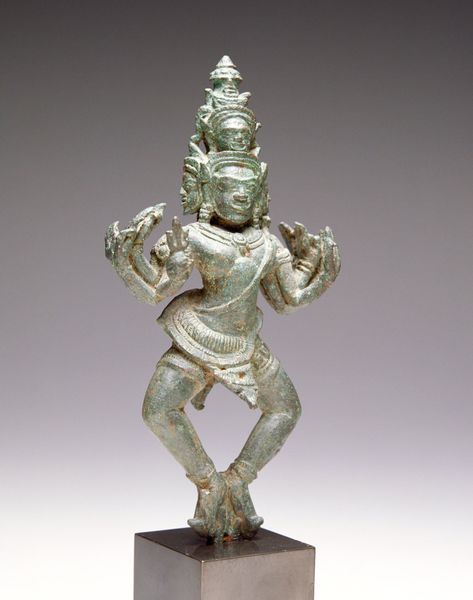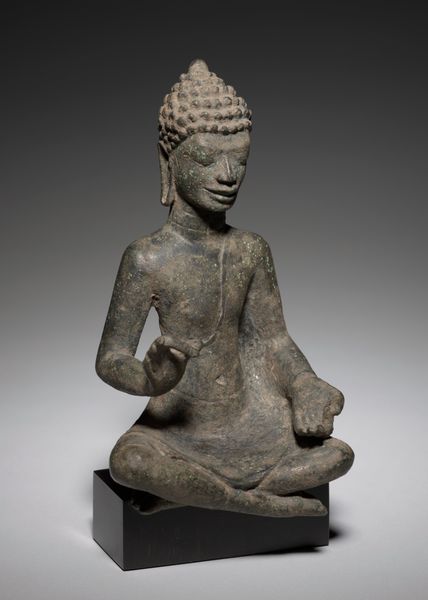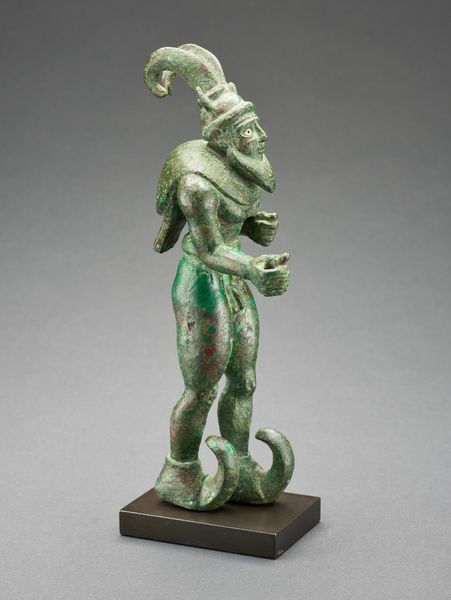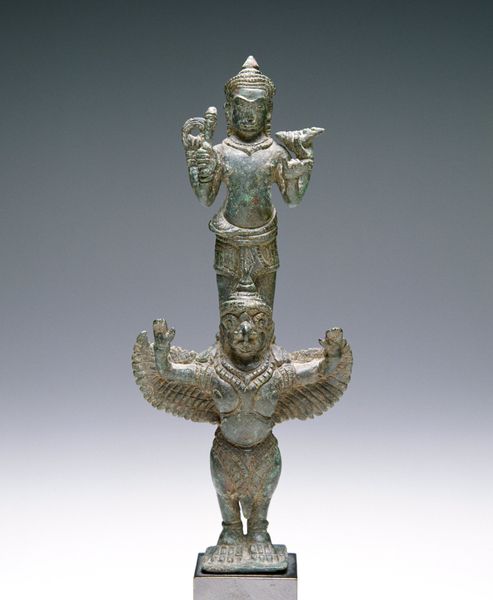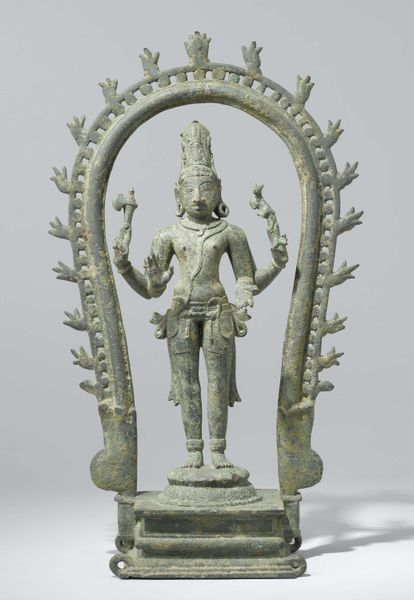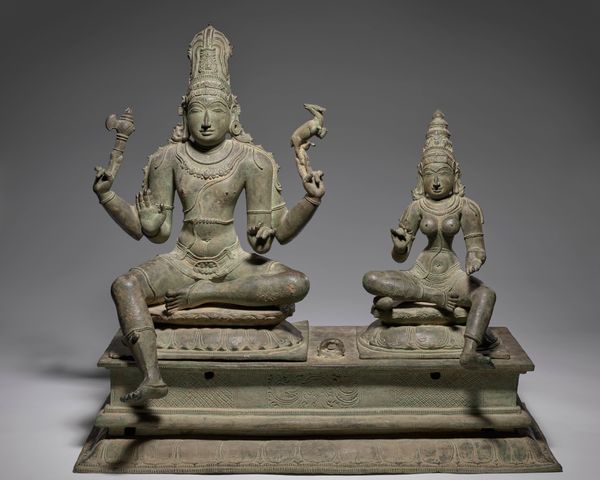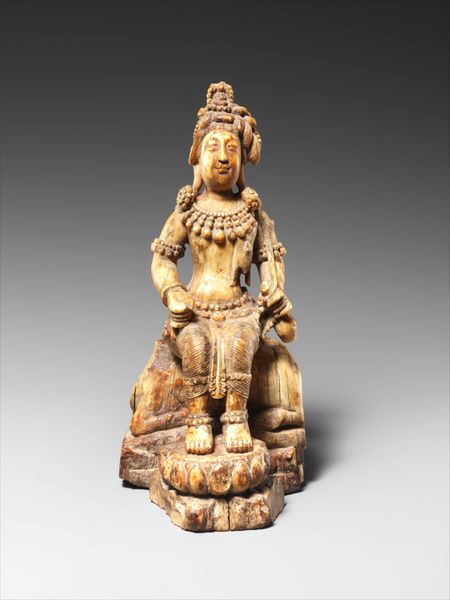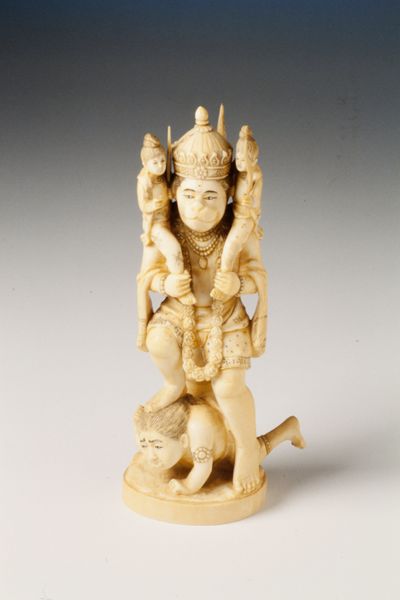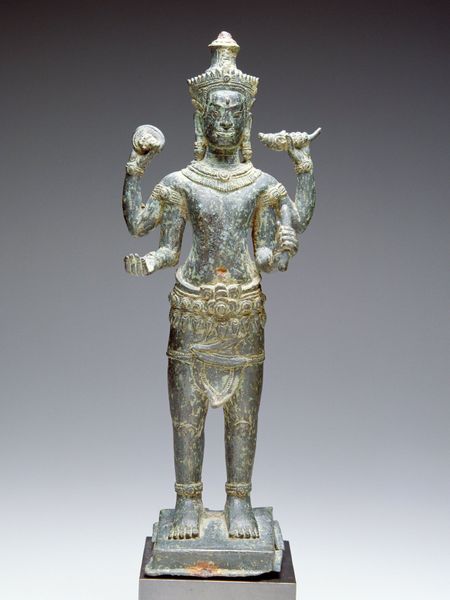
bronze, sculpture
#
medieval
#
sculpture
#
asian-art
#
bronze
#
figuration
#
sculpture
Dimensions: 4 x 2 3/4 x 1 15/16 in. (10.16 x 6.99 x 4.92 cm)
Copyright: Public Domain
This bronze figure of Ganesha, made by an anonymous artist, invites us to consider the interplay between form and representation. The sculpture presents the Hindu deity in a seated posture. The compact size of the sculpture emphasizes its geometric design, with the rounded belly contrasting with the sharp lines of the headdress. The artist employs a formal language that balances abstraction and figuration. The body of Ganesha is rendered with smooth surfaces, while details like the trunk and the ornaments are delineated with meticulous lines. This contrast creates a visual tension that animates the sculpture. The patina of the bronze lends the sculpture a tactile quality, inviting contemplation on the relationship between material and form. The artist's engagement with geometric and organic forms reflects a broader interest in harmonizing spirituality and material reality. This piece challenges our perception of divinity, inviting us to see Ganesha not just as a deity, but as a study in the formal possibilities of sculpture.
Comments
minneapolisinstituteofart almost 2 years ago
⋮
God of wisdom and remover of obstacles both visible and invisible, the elephant-headed Ganesha is invoked at the commencement of any new undertaking or journey. As the deity's spirit was thought to reside within its likeness, this small bronze statue would thus constitute a perfect traveling companion, guiding its owner towards wise decisions and safe paths. A popular Hindu deity, Ganesha was introduced to Cambodian artists in the 7th century. Over the next five centuries, India's chubby elephant icon was transformed into a sleek, anthropomorphic figure. He sits meditatively in a classic lotus position, holding his own broken tusk.
Join the conversation
Join millions of artists and users on Artera today and experience the ultimate creative platform.
